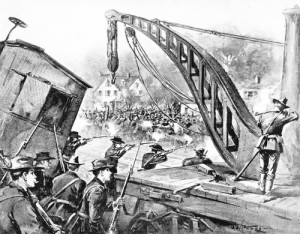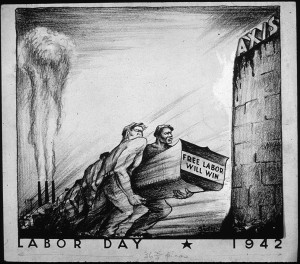The symbolism of Labor Day has come a long way from its roots as a day to celebrate the contributions of the men and women who built American industry. For most of us, the day marks the end of summer.
Ah, summer, the mythical season of endless days of relaxation. Labor Day marks the return to our normal frenetic activities.
• It’s time to “get back to work.”
• For parents, it’s time to send the children back to school. Whew!
• For retailers, it’s time for Back-to-School sales, once the second biggest retail day after Black Friday.
• According to Forbes, Labor Day weekend is still a good time to buy a car. New model years are available for the Gearheads who want the trendiest vehicles, and older cars are on sale.
• For your great-great-grandmother, Labor Day was the last day fashionable folk wore white. What! How come? Back in the days before air conditioning, fashion mavens in New York City wore thinner, white garments because they seemed cooler. But who wants to wear white once the autumn rains stir up the mud?
• Another way to look at it is as a marker for changing out closets – putting summer wear in the attic and bringing down those sweaters and wool blankets.
Embracing Labor Day.
• Labor Day is when we squeeze out the last drop of summer with that final barbecue. You know, the one where you hang paper lanterns, and throw a checked tablecloth on the picnic table out back.
• The event where you might serve a leisurely meal of tomato bruschetta, iceberg lettuce with cucumber dressing, corn & red potato salad, spicy grilled brisket, and banana crunch bars, washed down with a Belgium beer or a nice Zinfandel. [Pictures & recipes here.]
• I’m more pedestrian in my menus – would you believe steak, corn-on-the cob, and luscious baked beans accompanied by the soft drink of choice? Although, maybe I’ll get out the placemats.
These are all good reasons to celebrate Labor Day, but they aren’t the reason for the day.
A Little History.
Labor Day is a celebration of the men and women who built American industry. The worker bees who toiled 12-hours a day, 7 days a week without insurance, without safety regulations, and without the ability to negotiate a living wage. It’s about legal battles and violent strikes. It’s about the American Dream.

On Sept. 5, 1882, ten thousand workers in New York City gave up a day’s pay to march in the first Labor Day parade. By 1894, 30 states recognized Labor Day. On June 28 of that year Congress passed legislation marking the first Monday in September as a legal holiday. Official recognition didn’t end the struggle between labor and management, but it was a significant milestone.

Today we’re more apt to shop than attend a parade. We wear white all year round. We toast the passing of summer and the beginning of football season. And sometimes we remember how Labor Day entered the national calendar.
Acknowledgements:
Featured Photo: “Two Models at a Table” by Adolf de Meyer. Public Domain. Wikimedia Commons.
Ben Beier. “Labor Day is Black Friday for Car Shopping.” Aug. 29, 2014. Fortune. Here.
Laura Heller. “Labor Day Sales Could Be Bigger Than Black Friday.” Forbes. Here.
Nicole Rees. “Labor Day Weekend Barbecue.” Better Homes and Gardens. Here.
Diane Tsai (with video by Lily Rothman). “Why It’s OK to Wear White After Labor Day.” Time. Aug. 29, 2014. Here

Sandra Wagner-Wright holds the doctoral degree in history and taught women’s and global history at the University of Hawai`i. Sandra travels for her research, most recently to Salem, Massachusetts, the setting of her new Salem Stories series. She also enjoys traveling for new experiences. Recent trips include Antarctica and a river cruise on the Rhine from Amsterdam to Basel.
Sandra particularly likes writing about strong women who make a difference. She lives in Hilo, Hawai`i with her family and writes a blog relating to history, travel, and the idiosyncrasies of life.


Thanks for the history! Hope to see you somewhere soon!